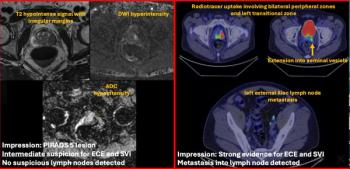
Most Patients with Acute Pancreatitis Don’t Need Imaging
Computed tomography and MRI may not be necessary for most patients who present to the emergency department with acute pancreatitis.
Early imaging of patients with acute pancreatitis (AP) when physicians are confident of the diagnosis does not provide added benefit to patient care, according to an article published in the journal
Researchers from Harvard Medical School in Boston, MA performed a retrospective study to assess the utility of imaging (CT and MRI) for patients with AP who present to the emergency department.
Patients were diagnosed with AP based on the presence of two of the following:
• Typical abdominal pain
• Elevated lipase/amylase, more than three times normal
• Imaging findings of pancreatitis
The results showed that of 60 women and 41 men (mean age 52) who were admitted with a diagnosis of AP, 63 (62.4%) underwent imaging. Only one patient was found to have pancreatic necrosis.
The researchers noted that 88 patients (87.1%) could have been clinically diagnosed based on the presence of abdominal pain and lab values alone. Of these 88 patients, 50 (56.8%) underwent imaging.
The researchers concluded that early imaging is a common practice for patients admitted to the emergency department with AP, despite most patients not requiring the tests. “ Reducing overuse of early imaging in patients with confident diagnosis of AP may improve quality and reduce waste,” they wrote.
Newsletter
Stay at the forefront of radiology with the Diagnostic Imaging newsletter, delivering the latest news, clinical insights, and imaging advancements for today’s radiologists.




























